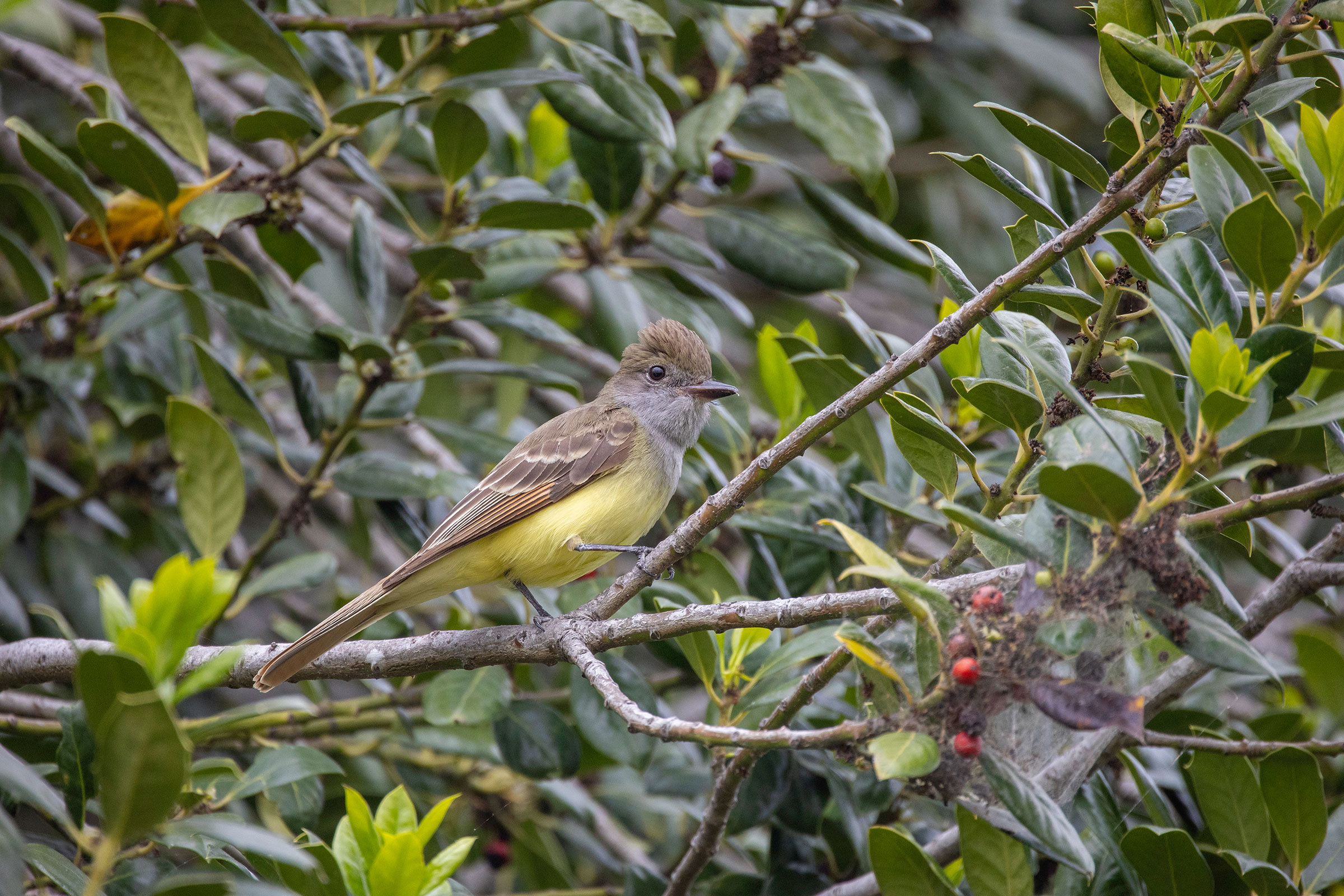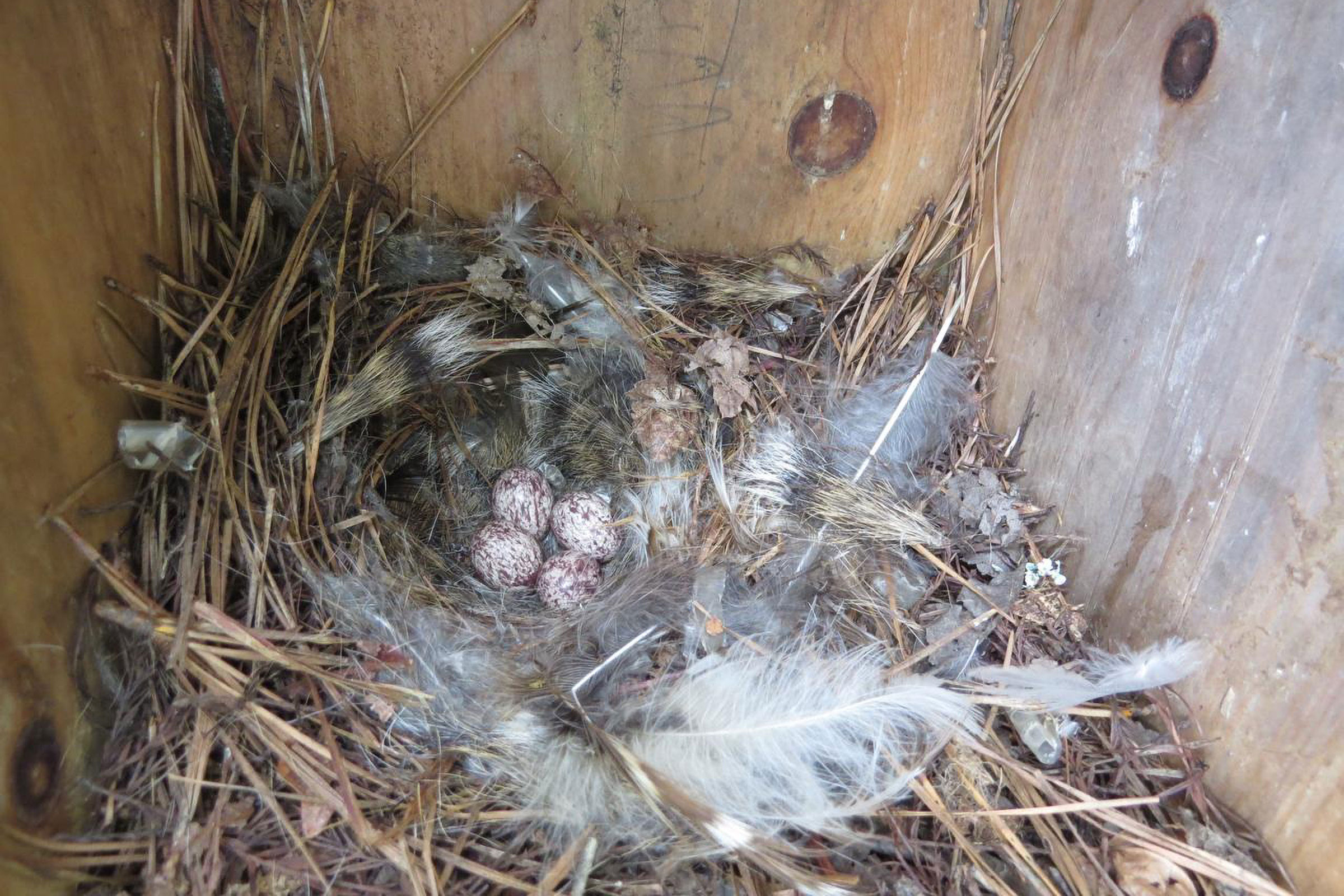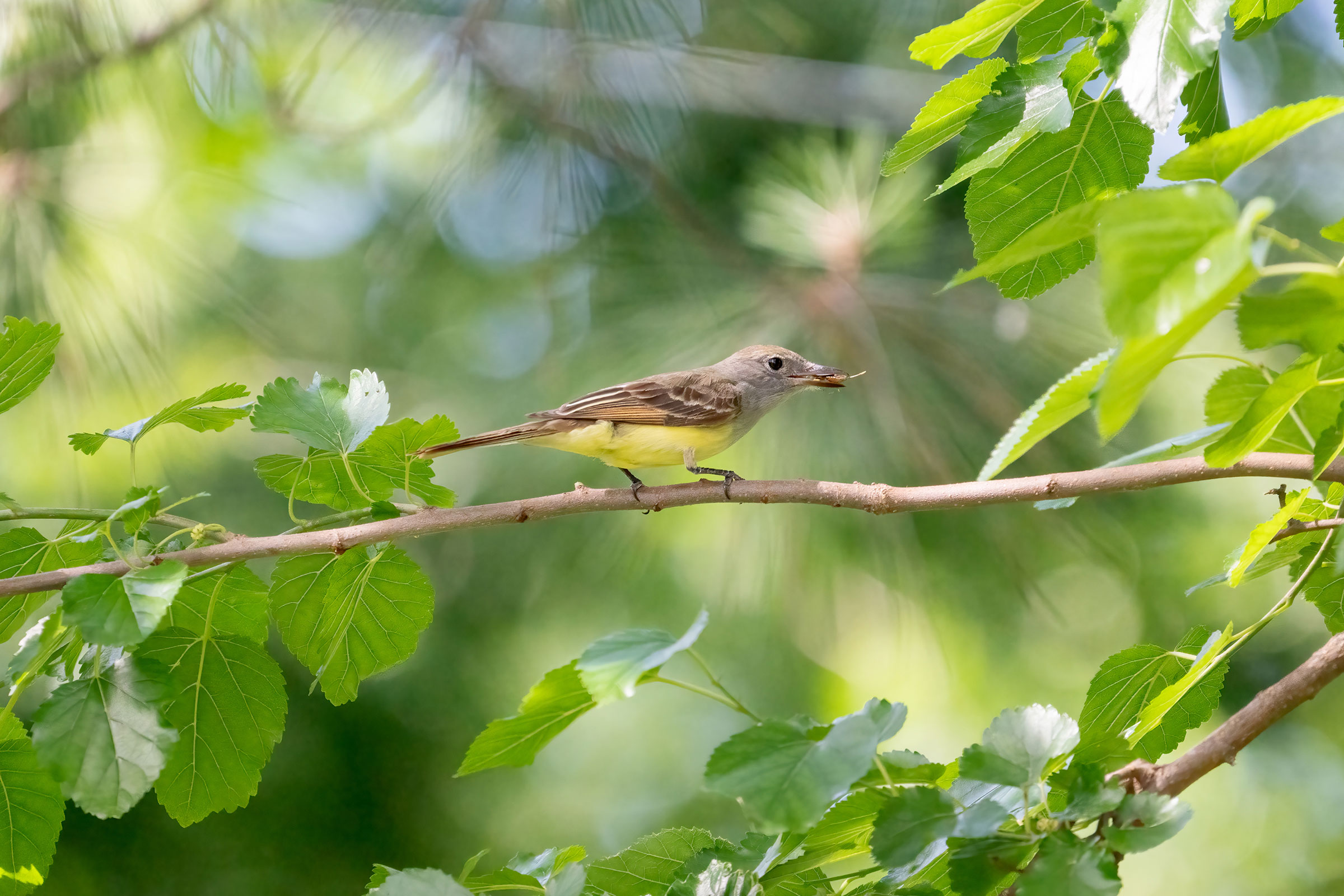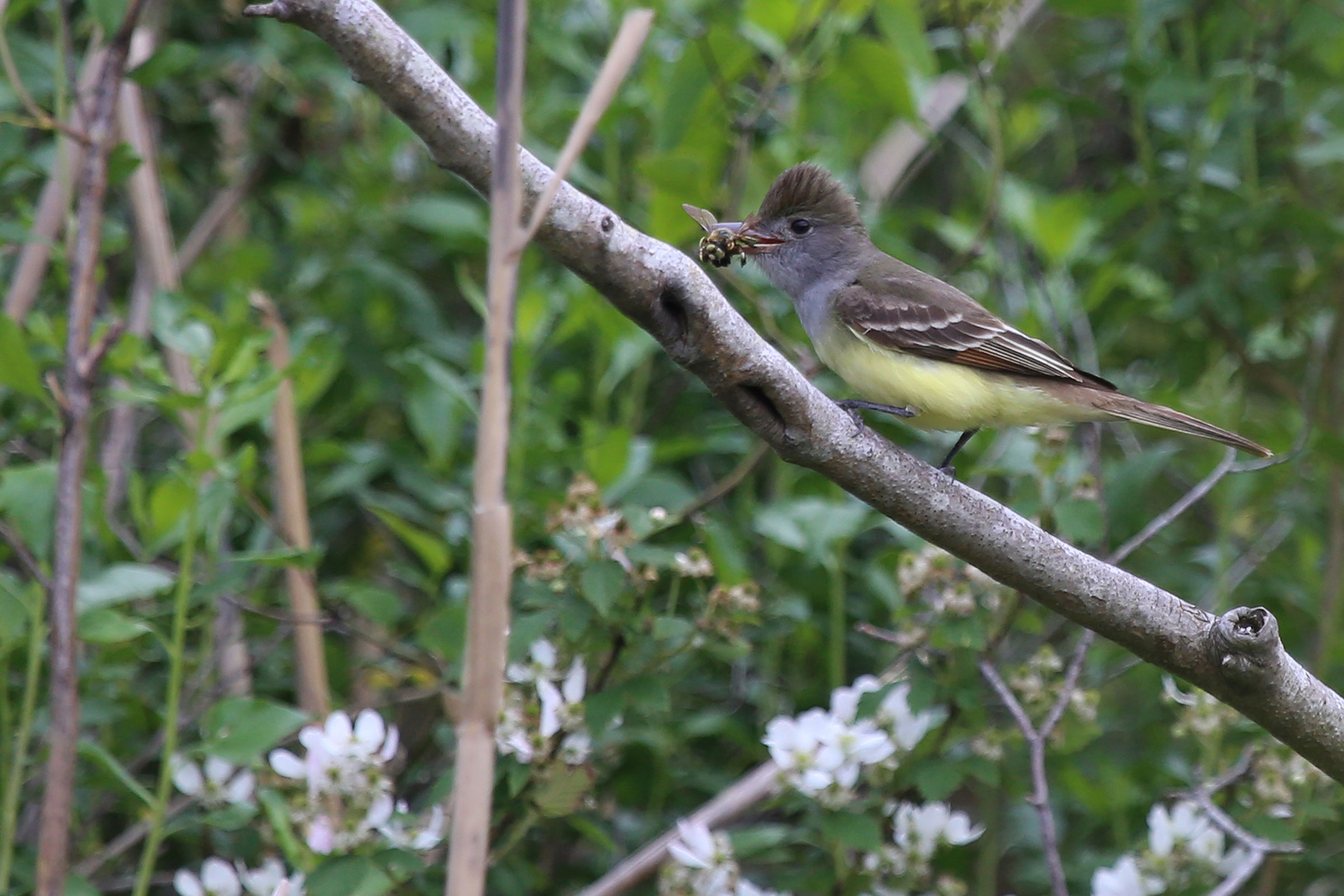Introduction
The Great Crested Flycatcher is a common breeding bird in Virginia, but it has several contrasting behaviors that set it apart from other common flycatchers in the state. For example, while some flycatchers occur in similar habitat, the Great Crested Flycatcher often forages in the forest canopy away from the competition. Great Crested Flycatchers make their nests in natural tree cavities or ones excavated by other species primarily in open coniferous, deciduous, and mixed forests but also in edge habitats and suburban areas (Miller and Lanyon 2020; Wilson 2014).
Breeding Distribution
Great Crested Flycatchers are found throughout the state, although they are slightly less likely to occur in the most heavily forested areas of the Mountains and Valley region than in other parts of the state (Figure 1). This geographic pattern is consistent with the fact that while Great Crested Flycatchers often nest in forests, they do not need large tracts of contiguous forest and are seemingly not impacted by forest fragmentation.
Great Crested Flycatcher distribution during the First Atlas and its change between the two Atlas periods could not be modeled due to model limitations (see Interpreting Species Accounts). For more information on its distribution during the First Atlas, please see the Breeding Evidence section.
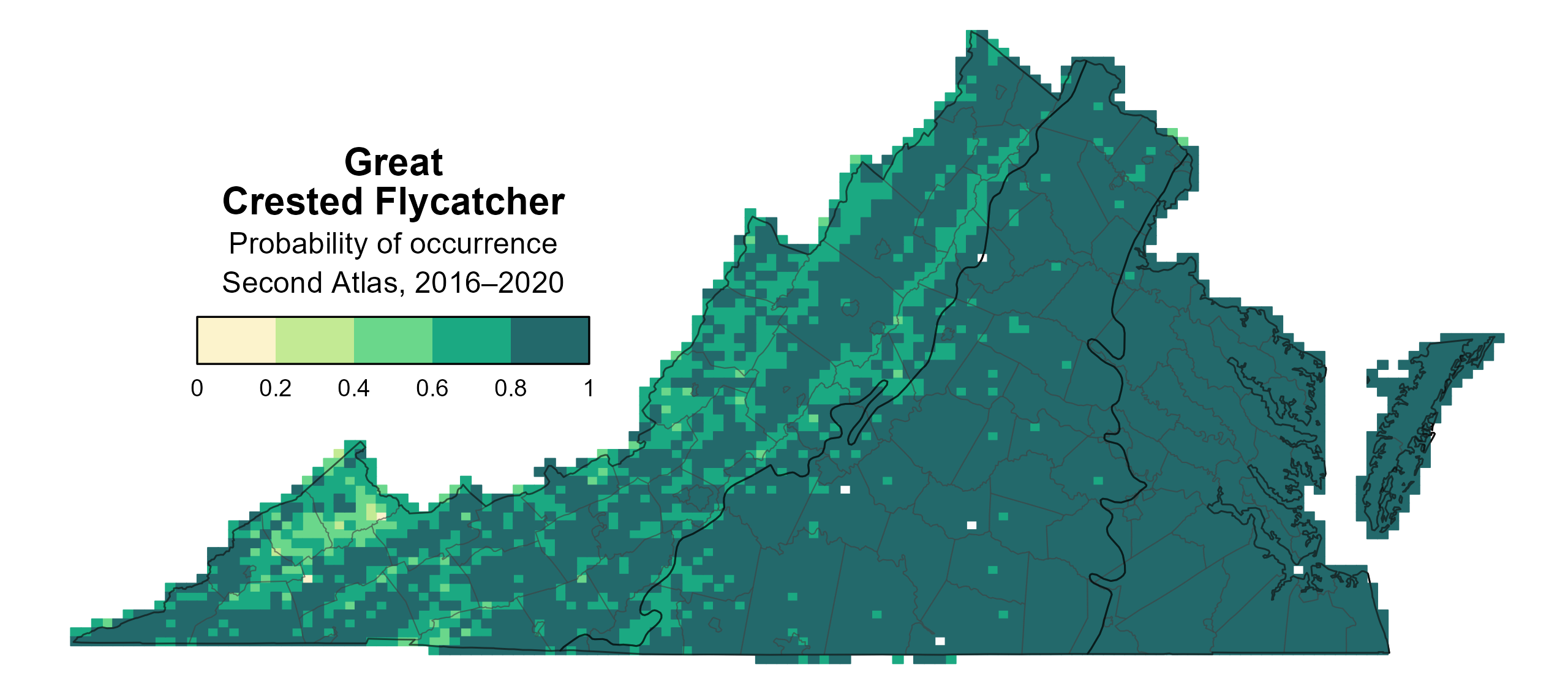
Figure 1: Great Crested Flycatcher breeding distribution based on probability of occurrence (Second Atlas, 2016–2020). This map indicates the probability that this species will occur in an Atlas block (an approximately 10 mi2 [26 km2] survey unit) based on environmental (including habitat) factors and after adjusting for the probability of detection (variation in survey effort among blocks).
Breeding Evidence
Great Crested Flycatchers were confirmed breeders in 324 blocks and 91 counties and found to be probable breeders in an additional 17 counties (Figure 2). Most breeding confirmations were observed in the Piedmont and Coastal Plain regions. Breeding observations were documented throughout the state during the First Atlas as well (Figure 3).
The earliest confirmed breeding behavior was recorded on April 30 when observations of adults carry nesting material were documented. Breeding continued until late August when the last recently fledged young were reported (Figure 4). In addition to these two breeding behaviors, observations of adults carrying food were also frequently recorded (May 9 – August 3) (Figure 4).
For more general information on the breeding habits of this species, please refer to All About Birds.

Figure 2: Great Crested Flycatcher breeding observations from the Second Atlas (2016–2020). The colored boxes illustrate Atlas blocks (approximately 10 mi2 [26 km2] survey units) where the species was detected. The colors show the highest breeding category recorded in a block. The numbers within the colors in the legend correspond to the number of blocks with that breeding evidence category.
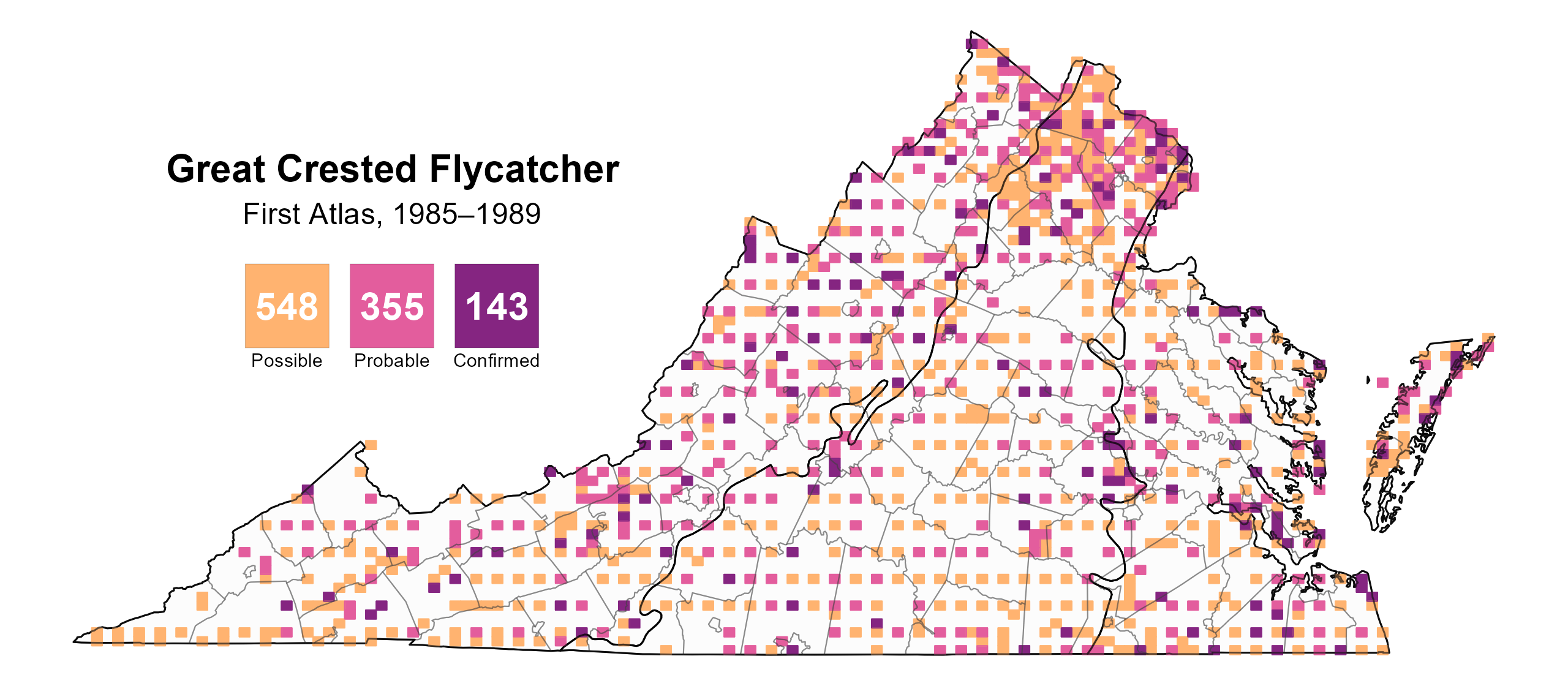
Figure 3: Great Crested Flycatcher breeding observations from the First Atlas (1985–1989). The colored boxes illustrate Atlas blocks (approximately 10 mi2 [26 km2] survey units) where the species was detected. The colors show the highest breeding category recorded in a block. The numbers within the colors in the legend correspond to the number of blocks with that breeding evidence category.
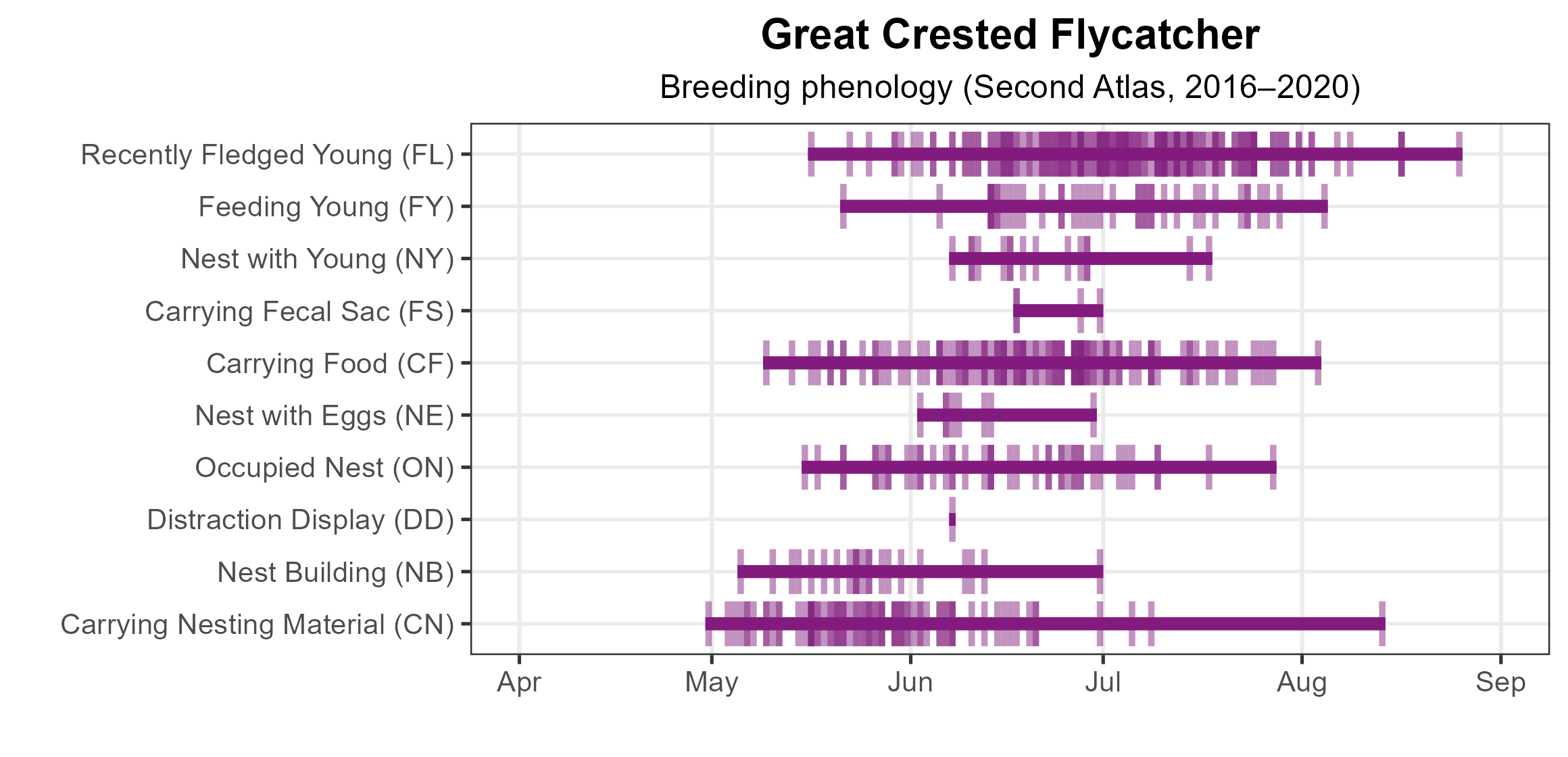
Figure 4: Great Crested Flycatcher phenology: confirmed breeding codes. This graph shows a timeline of confirmed breeding behaviors. Tick marks represent individual observations of the behavior.
Population Status
Great Crested Flycatcher relative abundance was estimated to be highest on the Eastern Shore and along the coastline of the Coastal Plain region. It was high to moderately high throughout remainder of the Coastal Plain and most of the Piedmont region (Figure 5). It was generally lower in the Mountains and Valleys region (Figure 5).
The total estimated Great Crested Flycatcher population in the state is approximately 598,000 individuals (with a range between 419,000 and 858,000). Based on the North American Breeding Bird Survey (BBS), the Great Crested Flycatcher population showed a significant increase of 0.66% annually from 1966–2022 in Virginia, and between Atlases, its population increased by a significant 1.14% per year from 1987–2018 (Hostetler et al. 2023; Figure 6).
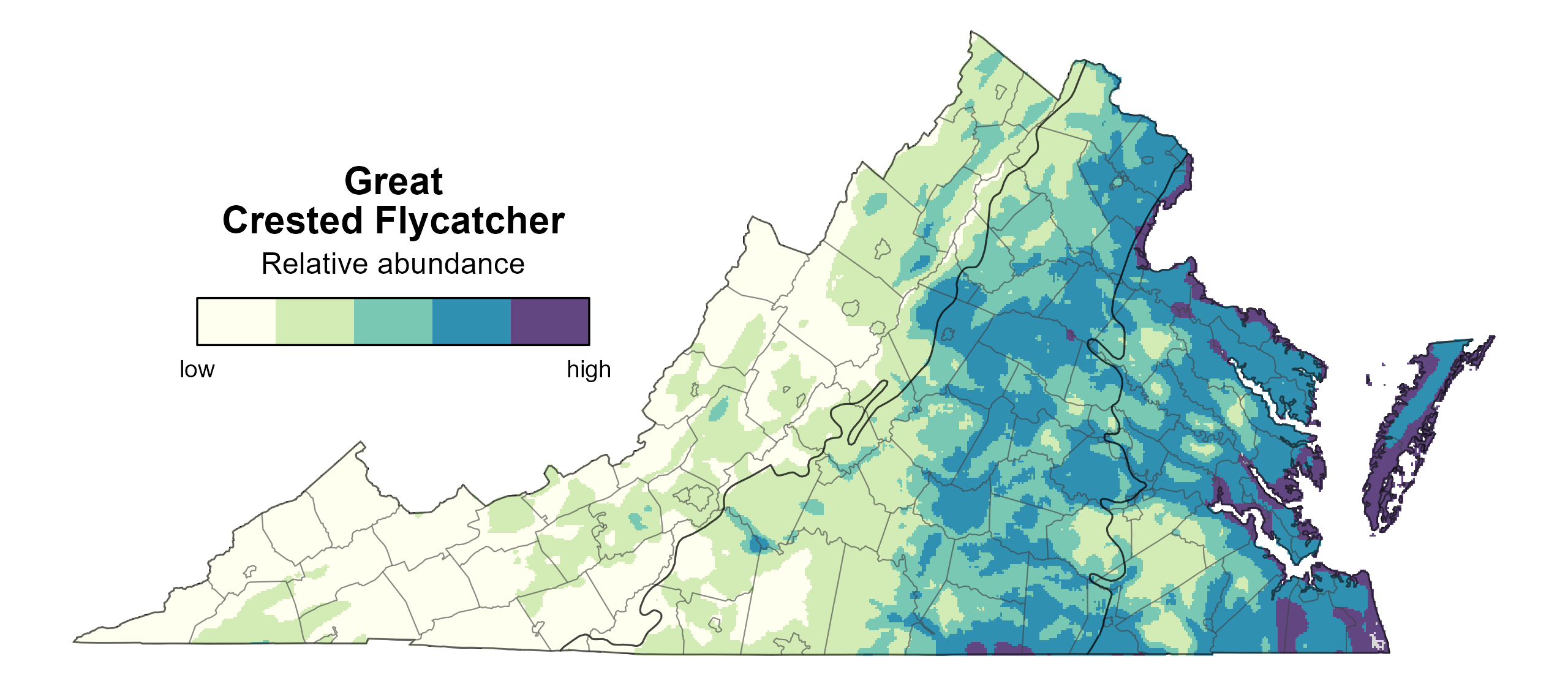
Figure 5: Great Crested Flycatcher relative abundance (Second Atlas, 2016–2020). This map indicates the predicted abundance of this species at a 0.4 mi2 (1 km2) scale based on environmental (including habitat) factors. Abundance values are presented on a relative scale of low to high.

Figure 6: Great Crested Flycatcher population trend for Virginia as estimated by the North American Breeding Bird Survey. The vertical axis shows species abundance; the horizontal axis shows the year. The solid line indicates the estimated population trend; there is a 97.5% probability that the true population trend falls between the dashed lines. The shaded bars indicate the First and Second Atlas periods.
Conservation
Great Crested Flycatchers are common and widespread throughout Virginia and their range (Miller and Lanyon 2020). Although no species-specific actions are implemented in Virginia, conservation actions for other species that focus on preserving or restoring areas with appropriate snags or trees with cavities for nesting will benefit this species as well.
Interactive Map
The interactive map contains up to six Atlas layers (probability of occurrence for the First and Second Atlases, change in probability of occurrence between Atlases, breeding evidence for the First and Second Atlases, and abundance for the Second Atlas) that can be viewed one at a time. To view an Atlas map layer, mouse over the layer box in the upper left. County lines and physiographic regional boundaries (Mountains and Valleys, Piedmont, and Coastal Plain) can be turned on and off by checking or unchecking the box below the layer box. Within the map window, users can hover on a block to see its value for each layer and pan and zoom to see roads, towns, and other features of interest that are visible beneath a selected layer.
View Interactive Map in Full Screen
References
Hostetler, J. A., J. R. Sauer, J. E. Hines, D. Ziolkowski, and M. Lutmerding (2023). The North American breeding bird survey, analysis results 1966–2022. U.S. Geological Survey, Laurel, MD, USA. https://doi.org/10.5066/P9SC7T11.
Miller, K. E., and W. E. Lanyon (2020). Great Crested Flycatcher (Myiarchus crinitus), version 1.0. In Birds of the World (A. F. Poole, Editor). Cornell Lab of Ornithology, Ithaca, NY, USA. https://doi.org/10.2173/bow.grcfly.01.
Wilson, M. D. (2014). Avian survey of Fort Lee, Virginia 2014. Center for Conservation Biology Technical Report Series, CCBTR-14-14. College of William and Mary and Virginia Commonwealth University. Williamsburg, VA, USA. 27 pp.

